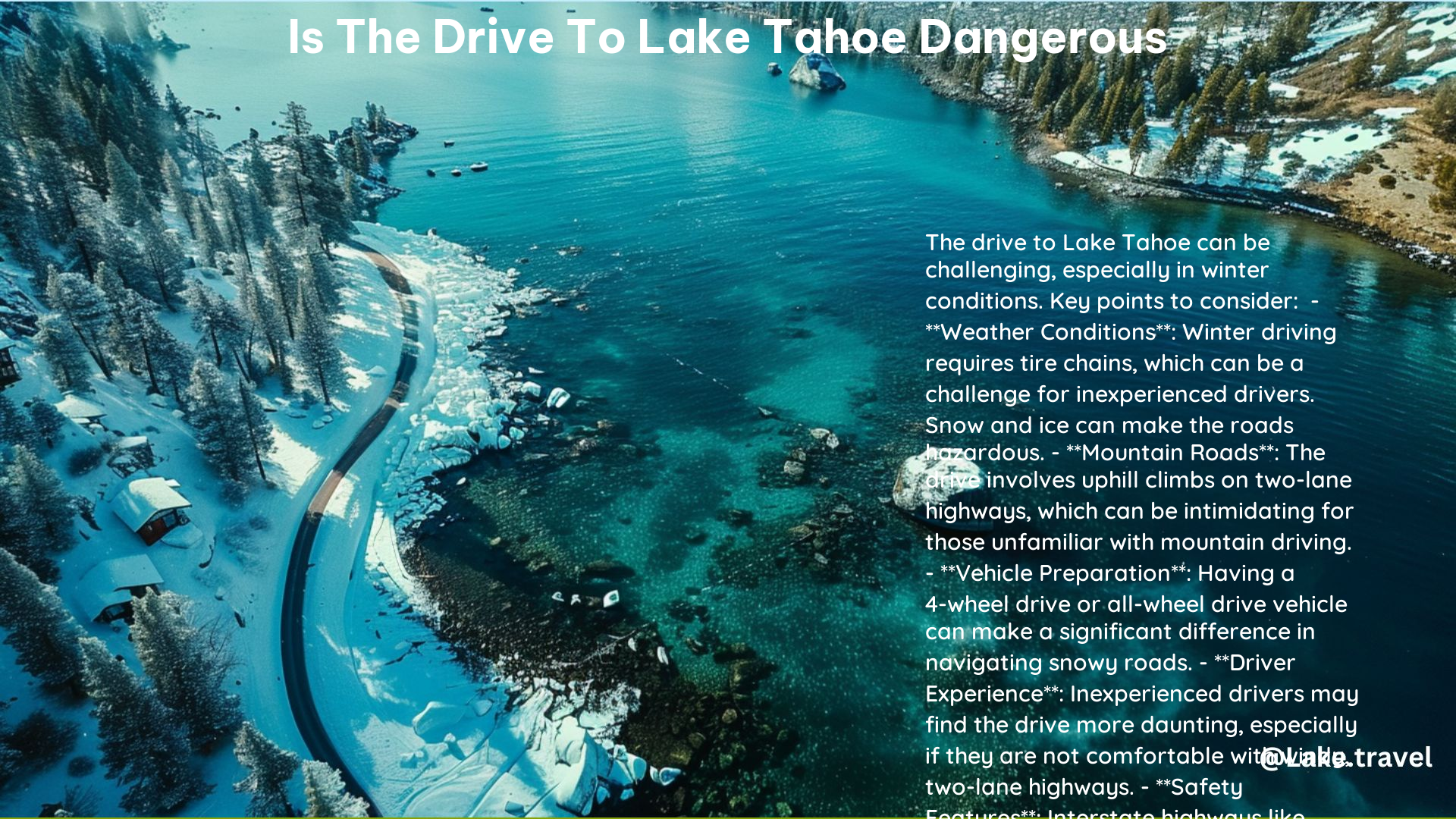The drive to Lake Tahoe can be a thrilling and scenic experience, but it can also pose some unique challenges for drivers. Whether you’re a seasoned mountain driver or a first-time visitor, it’s essential to be aware of the potential hazards and take the necessary precautions to ensure a safe journey.
Navigating the Winding Roads
One of the primary concerns when driving to Lake Tahoe is the winding, mountainous roads that lead to the lake. The route along Lake Tahoe, particularly on Route 89 on the west side, features steep drop-offs and tight hairpin turns that require extra caution and slow driving. These sections can be particularly treacherous in inclement weather or when visibility is poor.
To navigate these roads safely, it’s crucial to:
-
Maintain a Slow and Steady Pace: Resist the temptation to speed, as the sharp turns and steep gradients can easily lead to loss of control. Instead, keep your speed low and consistent, allowing yourself ample time to react to any unexpected situations.
-
Stay Alert and Focused: Driving in the mountains requires your full attention. Avoid distractions such as using your phone, adjusting the radio, or engaging in conversations that could take your eyes off the road.
-
Be Aware of Your Vehicle’s Limitations: If you’re driving a larger vehicle, such as an RV or a heavily loaded SUV, be mindful of its handling characteristics and adjust your driving accordingly. These vehicles may require more space and a longer braking distance, especially on steep descents.
Dealing with Unpredictable Weather

The weather in the Lake Tahoe region can be highly unpredictable, with sudden changes in temperature, precipitation, and visibility. Heavy snowfall can result in road closures, particularly when crossing Echo Pass, making the drive even more treacherous.
To prepare for the weather challenges, it’s essential to:
-
Check Weather Forecasts: Before embarking on your journey, check the weather forecast and road conditions for the areas you’ll be traveling through. This will help you plan your route and make informed decisions about the best time to travel.
-
Equip Your Vehicle Properly: Ensure your vehicle is equipped with winter tires or all-season tires with good tread depth. Carry snow chains or cables, and know how to install them quickly if needed.
-
Adjust Your Driving Accordingly: If you encounter snow or icy conditions, slow down, increase your following distance, and be extra cautious when braking or turning. Avoid sudden maneuvers that could cause you to lose control of your vehicle.
Navigating Traffic and Lighting Challenges
The drive to Lake Tahoe can also be impacted by heavy traffic, particularly during peak times such as morning and evening rush hours, as well as Saturday mornings. Additionally, some sections of the route may lack adequate street lighting, which can make it more difficult to spot wildlife or other hazards on the road.
To mitigate these challenges, consider:
-
Timing Your Travels: If possible, try to avoid driving during the busiest times of day or week. Early morning or late afternoon/evening trips may be less congested and provide better visibility.
-
Be Vigilant for Wildlife: Keep a close eye out for wildlife, such as deer or bears, that may wander onto the roadway, especially in areas with limited lighting. Slow down and be prepared to stop if you spot any animals.
-
Use Your Headlights: Ensure your vehicle’s headlights are in good working condition and use them, even during the day, to improve visibility and make your vehicle more easily seen by other drivers.
Alternatives to Driving
If you’re not comfortable with the challenges of driving to Lake Tahoe, there are alternative transportation options available. Consider taking a bus from major cities like Sacramento, Los Angeles, or Las Vegas, or taking a train from Sacramento to Truckee and then a bus to Tahoe City.
By being aware of the potential hazards, taking the necessary precautions, and considering alternative transportation options, you can enjoy a safe and memorable journey to the beautiful Lake Tahoe region.
